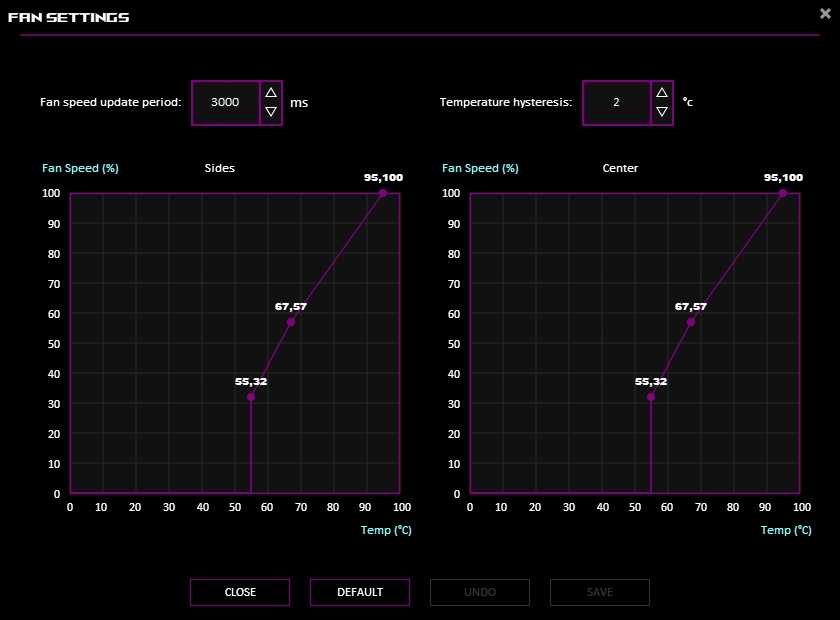

Updated · Feb 11, 2024
Updated · Jul 28, 2023
Deyan is an avid enthusiast and self-proclaimed fan of the Windows operating system. His passion for... | See full bio
“Do GPU fans always spin?” becomes an important question if your graphics cards have been getting extremely hot lately, and their fans won’t stop spinning.
The short answer is: no; your GPU fans are not supposed to spin constantly, especially if you own a recent model designed to conserve electricity and durability.
Keep on reading to learn why your fans may be spinning nonstop.
Modern graphics cards have been designed with efficiency in mind and to save on electricity as much as possible without affecting their performance. This feature also decreases the fans’ degradation and reduces the noise they make.
Therefore, the answer is: no. Your GPU fans shouldn’t spin without stopping since most cards are not running at full load at all times (not considering mining farms).
As a rule of thumb, you can expect your GPU to spin up its fans only when it needs to prevent overheating and maintain its current level of performance.
In general, expansive GPU models are developed with larger and more efficient heatsinks and fans that won’t start spinning until they reach high temperatures.
Conversely, cheaper graphics cards often experience overheating issues and the resulting performance loss has their fans set to start at a lower threshold.
Having this in mind, the average threshold at which most mid-range cards activate their fans is around 50°C. Therefore, while browsing the web, watching a movie, listening to music, or doing any other undemanding task, you won’t hear a peep from your fans.
You can always choose the specific conditions under which your GPU fans start spinning and their corresponding intensity by adjusting your GPU fan curve.
To do that, you need specific software that allows you to change your GPU parameters, such as MSI Afterburner, EVGA Precision X1, or GPU Tweak III.

source: GPU Tweak III desktop app
For example, you can increase or decrease the temperature limit at which they start spinning and their intensity at specific temperature junctures.
That said, you can also set your fans to spin at all times at a constant speed (measured as a percentage of total speed capability from 0% to 100%). Vice versa, you can turn them off completely if you are not typically using the GPU at full load.
However, be cautious when doing so since you affect their long-term durability.
While increased GPU temp is the main reason the card’s fans may be unable to stop spinning, other causes may also cause the issue, as reviewed below.
The common and apparent reason why your GPU fans are ramping up to full speed constantly, especially during long gaming or rendering sessions, is the increase of heat resulting from a lack of a good cooling solution.
Therefore, to reduce the GPU fans’ activity, you have to decrease the card’s temperature by keeping an open case, cleaning your system regularly, adding more case fans, or reducing the demands on your system.
The GPU driver is the little piece of software responsible for your card’s operation, including its fan speed and uptime. If the driver is outdated or malfunctioning, you may experience all sorts of issues, from visual glitches to unpredictable fan behavior.
To ensure that the GPU drivers are not causing the problem, uninstall your old ones, download the latest drivers via your card’s website, and reinstall them.
PC users often underestimate the effect of dust and gunk build-up on their system’s performance. Essentially, the components of any computer must receive sufficient airflow to manage better and shed the heat they generate.
That said, closed systems that haven’t been cleaned recently heat up easier, which results in impacted performance, reduced longevity, and increased fan speeds. To avoid such consequences, give your system the odd clean-up now and then.
Unexpectedly, fans may also start speeding up for longer periods if they are failing. Because of wear and tear, power surges, or other factors, faulty fans may be unable to cool down your GPU properly, so they’ll ramp up their speed in a desperate final attempt to control the GPU temps. In such cases, you have to replace the fans.
You would be surprised how many users tinker with overclocking software to boost their GPU performance and inadvertently set up an aggressive fan curve they forget about.
By default, fan curves are balanced between performance and noise levels. However, you may have set them to run at constant high speeds to get the most out of your GPU. So, if you’ve ever handled such software, reset your GPU fan curves to default.
Modern graphics cards are programmed to only spin up their fans when they need to cool down because their performance may be affected. That way, you won’t hear any annoying noise, and you’ll prolong the lifespan of your GPU fans. However, you can always set up a custom fan curve to activate your fans at the temperature and intensity you want them to!
Some cards just don’t get too hot because of an efficient design or because they are not that powerful and/or expensive. Fewer fans also mean smaller GPUs—which are necessary for small form factor (SFF) computers.
Your GPU generates a lot of heat while performing intensive calculations during gaming and rendering sessions. Therefore, it needs robust fans that can dissipate that heat before it starts affecting the card’s performance and stability.
While the answer varies from card to card, you still want to keep your temperature under a certain threshold. For instance, your temps under load should be in the range of 65° to 85°C, while they should vary between 30° to 45° C when the card is idle.
Your email address will not be published.
Updated · Feb 11, 2024
Updated · Feb 11, 2024
Updated · Feb 08, 2024
Updated · Feb 05, 2024



